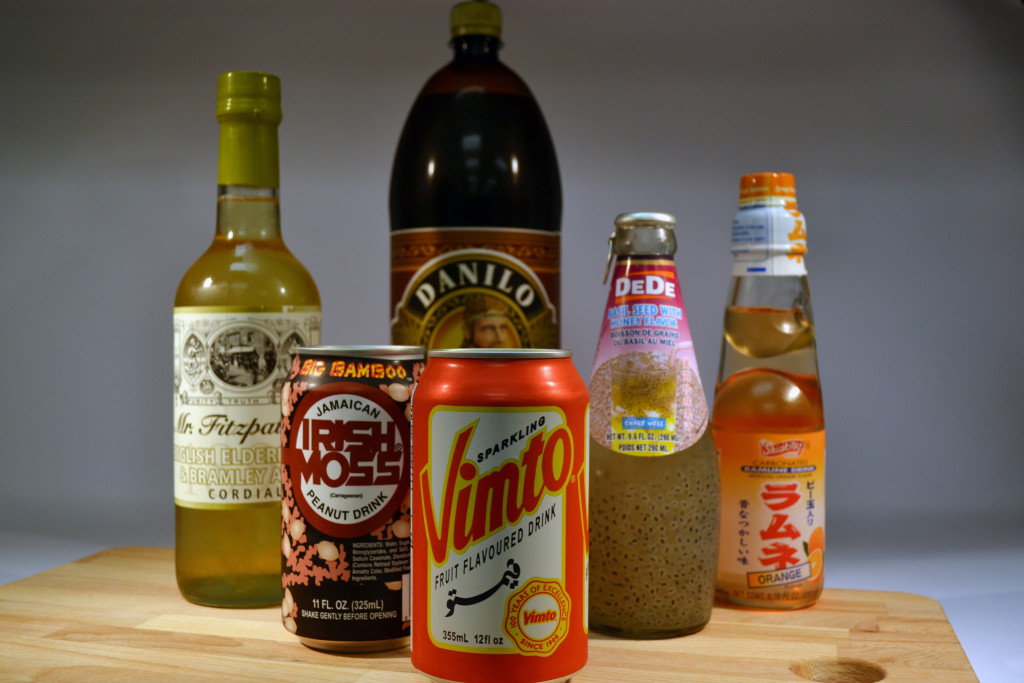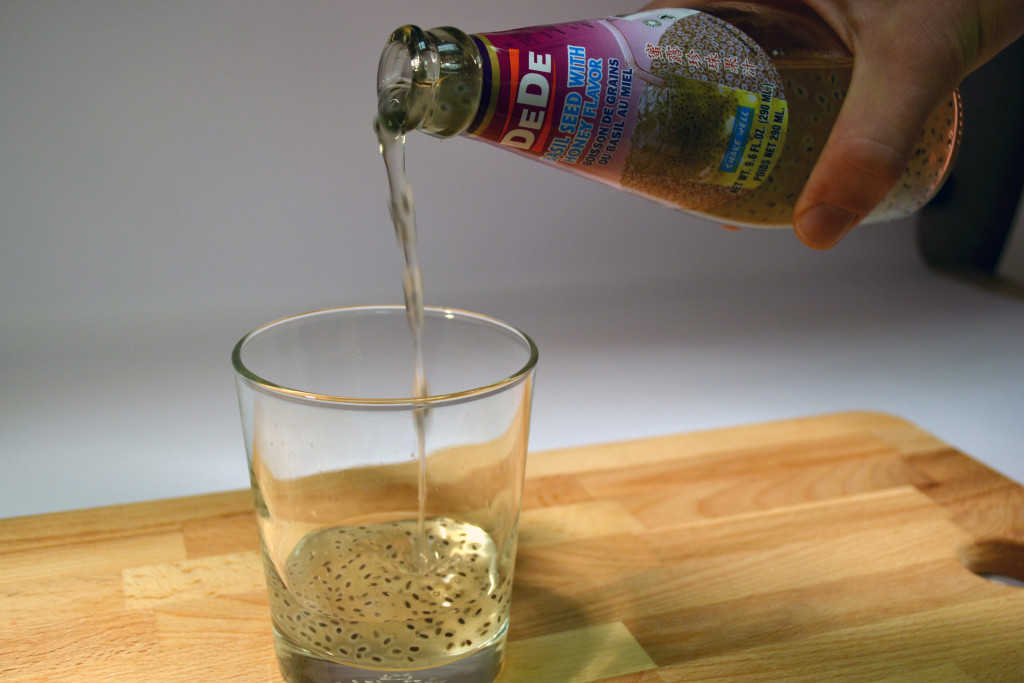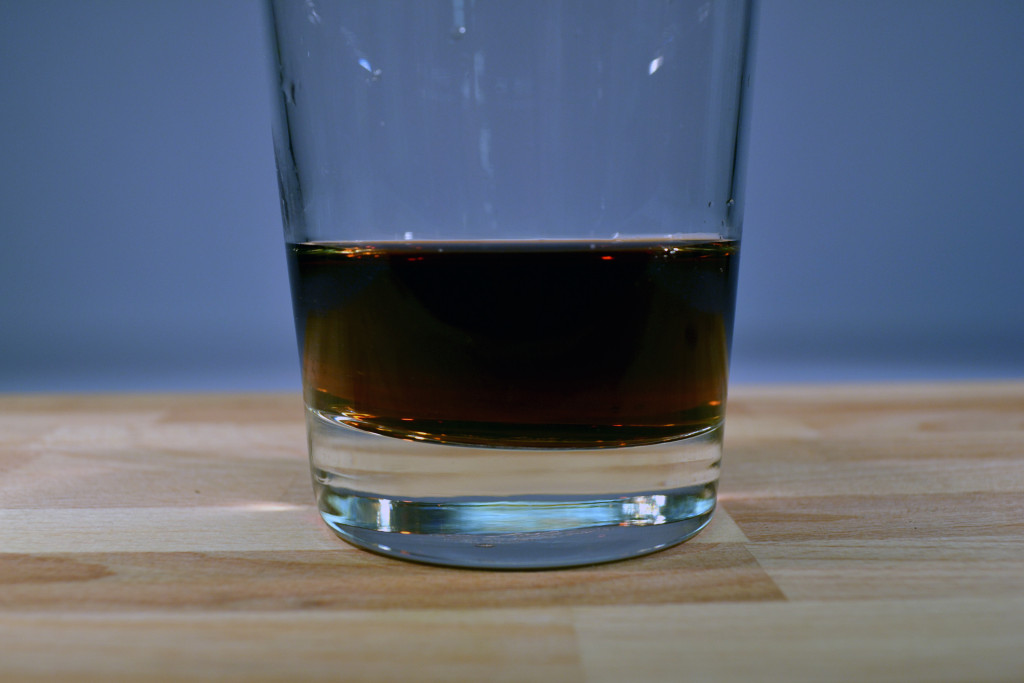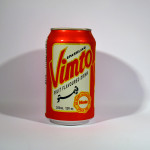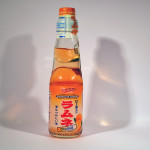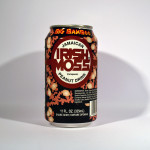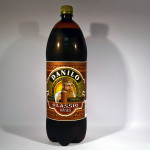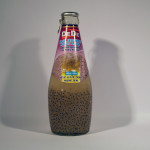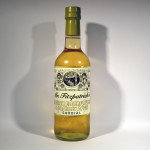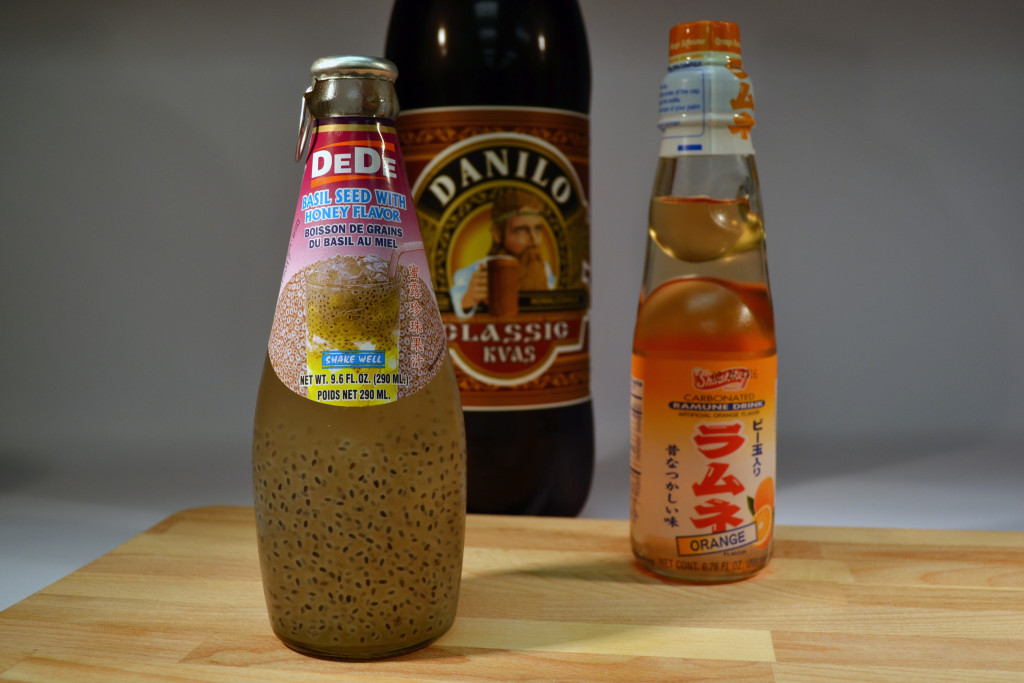
Drink, Drank, But Not Drunk – An Adventure Into the Beverage Unknown
Back to feed- Posted: 10/14/2016
- Categories: Discoveries at the Jungle
We find ourselves in the fortunate position of having too many drinks to even name, let alone try. Entire aisles are dedicated to canned and bottled beverages from all over the world. But that also affords us the opportunity to explore something that has a significant presence at Jungle Jim’s, though we fully admit that it’s only a tiny portion of the items available.
After considering our options – of which there are hundreds, if not thousands – where did we start? Well, this is a space dedicated to exploration. We’re naturally curious about what’s around us. So we let our curiosity lead the way, and were genuinely – and in most cases, pleasantly – surprised by what we found.
There were a few so unique to the region that more, immediate research was necessary for us to even understand what we were holding. Granted, we figured that was going to be the case when we decided on this topic, but we were genuinely surprised by what we found out. Some were fairly straightforward – canned or bottled, sparkling, fruity. Others, not so much. A peanut drink, a fermented rye beverage, something that looked slightly gelatinous with tiny, floating black specks… and one that even had to be diluted in water (spoiler alert: it was delicious). As is often the case at Jungle Jim’s, though, we barely scratched (or rippled) the surface.
A Note: There were no exacting qualifications for what we wanted to try, because honestly, we weren’t even sure what we were looking for. The broad idea was to find something fruity, a carbonated beverage or two, perhaps coffee and/or tea based drinks, something weird – maybe even a drink that combined some or all of those elements. The overall concept: find something intriguing, pick it up, and go with it. We refrigerated all of the bottles and cans and tried them one after the other – cleansing our palates as needed along the way.
Vimto is a carbonated “fruit flavoured drink,” originating in England, though that’s not actually where we came across this delicious not-quite-soda within the store. Interestingly, Vimto has been made in one form or another since 1908. It started out as a cordial and a tonic, and was marketed as a having medicinal properties, but was soon turned into a soft drink (much like Coca-Cola in the US), and went through a few different transformations (and still is, as new products under the Vimto name are still popping up). We actually found this particularly non-descript canned beverage in the Middle-East section, a little out of view on the bottom shelf. It was one of the last ones we chose, but it was the first one we tried.
Considering how long this has been around, we were genuinely surprised at how familiar the flavor was to us. The most immediate comparison was Big Red soda, and that’s the one that stuck with us as we continued to sip this slightly fizzy, surprisingly sweet drink. However, as we kept drinking, a few of the other flavors listed actually started to come out – raspberry and blackcurrant started to cut through the sweetness, giving the almost-soda a fruity brightness that turned out to be rather enjoyable.
Looking back, it was odd that we accidentally picked the most familiar flavor. Because it got significantly less familiar as we went along…
Trying to pick a beverage, be it canned, bottled, boxed, or otherwise, from the Asian section – let alone the Japanese section – of Jungle Jim’s is nothing short of a challenge. There’s simply too much to choose from. One member of our team, though, has had some experience with this drink – “marble soda” as it’s often referred to due to it’s, shall we say, unique bottle design – and was excited for the rest of us to try it out. The drink itself was enjoyable – fizzy but not overly so, flavorful enough to be interesting (or at least not boring) – but it was the bottle that provided the head-scratching.
Within the bottle is a small marble that’s meant to float on top of the liquid. But first, you have to remove the cap of the bottle and force the marble into the drink by pressing down – hard – with your thumb (definitely hold on to the bottle with your other hand!). We have to imagine that, on occasion, errant bottles of flying Ramune have caused quite a stir. The bottle is designed to allow the marble to sit in different positions – however, the drink is meant to be sipped, not chugged, and the marble is used as the means to get you to take your time and enjoy the drink. The bottle is small, though, so that’s probably the best way to do things – take your time and savor what is actually a relatively lightly flavored and refreshing beverage.
Well. This one seemed straightforward enough. We weren’t quite sure to what to make of “peanut drink,” even though that was the main reason we chose it. Was it going to be a liquid, like a juice or a soda? Or something else entirely? Would there be only hints of peanut, or was this really a “peanut drink?” And what exactly is Irish Moss?
First and foremost, it’s not a liquid, like juice or soda. It is something else entirely. With a consistency existing somewhere in the space between melted ice cream and a thin milkshake, this sweet, exceptionally peanut-y drink is both a surprise and exactly what it says it is. While we admit that drinkable peanuts may not sound like the most enjoyable beverage you can pick up on a warm summer day, it’s easy to see the appeal of a drink like this. It’s sweet, but in a good, peanut buttery kind of way, and the consistency, while initially a little off-putting, was actually rather easy to get used to. We will say, though, that a little bit seemed to go a long way. The consistency, too, was of note because of how it’s achieved – that’s where the Irish Moss comes in. A red algae, Irish Moss is the source of a thickening agent called carrageenan, which is used in a wide range of foodstuffs (that’s probably an article unto itself – this stuff is bizarre and used in all kinds of ways). It’s also considered as source of natural energy, making this particular drink both a protein and energy drink in one. We don’t recommend chugging one of these after a workout or a long run, but can say that we enjoyed this much more than we thought we would.
This Eastern European beverage was one of the least known collectively, but had a fairly familiar flavor.It was also the one that was a little more divisive than the others. Some of us liked it immediately, some of us weren’t fond of it at first. The initial taste can be a little off-putting – mostly because if you’ve never had it before it’s a bit of a surprise, and maybe even a little confusing. Humorously, though, almost everyone agreed that it was better than what they imagined it would be.
Something of a point of national pride for Russia (the socio-economic and resurgent nationalism and the newly revitalized popularity of kvas would make for a great essay, but we digress) both homemade and commercially produced kvas, or kvass depending on the region, isn’t quite a beer, definitely isn’t a soda, but almost falls somewhere between the two. Much like the others, kvas is very much it’s own thing. Made from fermenting rye bread with a particular kind of kvas starter yeast called zakvaska, it’s a naturally carbonated, kind of sweet, definitely tangy beer-like drink that is actually quite refreshing. And when we say beer-like, we mean it. There’s an easily recognizable similarity in flavor between kvas and some beers – kvas, unsurprisingly, even has a notable, though not necessarily noticeable, alcohol content. But that rarely exceeds 1.5%, so it’s considered a non-alcoholic beverage.
This is a type of drink that’s been around for over 5,000 years now, so there are some variations. Each kvas that’s made is slightly different than its counterparts, (there are quite a few recipes, all with the same basic makeup, though), with each one being unique in it’s own way. Honey, raisins, and other sweetening agents are used to cut through the acidity, and different types of rye bread are used to start things out, giving each one it’s own color and flavor. All-in-all, this was a great experience that may have lead to a few of us picking up a two-liter bottle to share with the more adventurous of our friends and family.
Once this one caught our eye, it was hard not pick it up, squirm a little bit, then take it back with us to try out. We had already chosen a beverage from an Asian country (Japan) – which was 100% more adorable than this drink, we’ll give it that. But what this truly interesting drink from Thailand lacked in preciousness, it made up for in (relative) weirdness, unique flavor, and overall experience.
It should be immediately obvious why we found this one so visually captivating – though the actual tasting part we were still completely unsure of. Held within a thicker than usual liquid, basil seeds float inside the bottle, offering a stark contrast to some of the more standard and appealing drinks we’d already tried. There was also a more than passing resemblance to frog eggs (or, we guess, tadpoles – but, you know, really tiny ones). The drink itself is sweetened with honey, but has a taste close to, but not quite, banana flavored candies. The seeds themselves expand in a way that allows the central seed portion to remain, but creates a gelatinous bubble around the seed itself that has a tapioca-like consistency. If you’ve ever had boba (or bubble) tea, the mouthfeel is incredibly similar – it’s the slight crunch of the seed that makes it significantly different.
Also of note: this is a drink, or at least a style of drink, with a long history in the region. Thai basil seeds are recognized for their supposed health benefits (aiding digestion, helping soothe cold symptoms, stress and skin relief, and even weight loss), so their inclusion here has some traditional weight to it. Once you get past the texture – and after the first drink, it’s really not that hard to do – this is a sweet, tasty, refreshing drink that we enjoyed quite a bit… “tadpoles” and all.
If all of our previous samplings were meant to represent street level variations on beverages and soft drinks, then this one was meant for a lovely brunch on the English countryside. As a cordial – which, under the British definition, means syrupy and/or ultra-sweet non-alcoholic beverage – this one required a bit of tinkering, and oddly enough, a little more time trying to understand exactly how to drink it. Thick, pungent (in a really delightful way, mind you), and super sweet, we soon realized that this was a drink meant to be diluted (thanks, directions!), so that’s what we did.
The recommendation was to mix it to taste with cold sparkling water, creating a concoction that ended up being the most suited to personal tastes out of all of the drinks we tried. We chose to keep things simple, though, and mixed it with some cold, filtered water, at about a 1:3 ratio (one part cordial, three parts water).The end result? A cool, refreshing, elegant, and flavorful drink that had a tremendous amount of apple taste (thanks to the Bramley’s, which are usually sour, but help to balance out the sweetness quite well) and the rich, floral creaminess of elderflower. It was a great end of summer flavor that was, coincidentally, a truly pleasant way to end our jaunt through the wide, weird world of international beverages.
To say the least, this was an eye-opening, and mouthwatering, experience. We were challenged in quite a few ways – narrowing down options for us to try, figuring out what to do and how to do it when it came to opening some of the actual containers, understanding the best ways enjoy each drink, remaining game enough to try the ones that were a little (or a lot) outside of our comfort zone. Each one was unique and almost completely different from the others, and each one had a quality that could be appreciated, if not loved. Frankly, we’re already excited for the next round of taste tests. We hope you are, as well.
So all of this has us more than a little curious: what’s your favorite international beverage? Did you find it on your own, or was it recommended? We’d love to hear from you, so sound off below!

